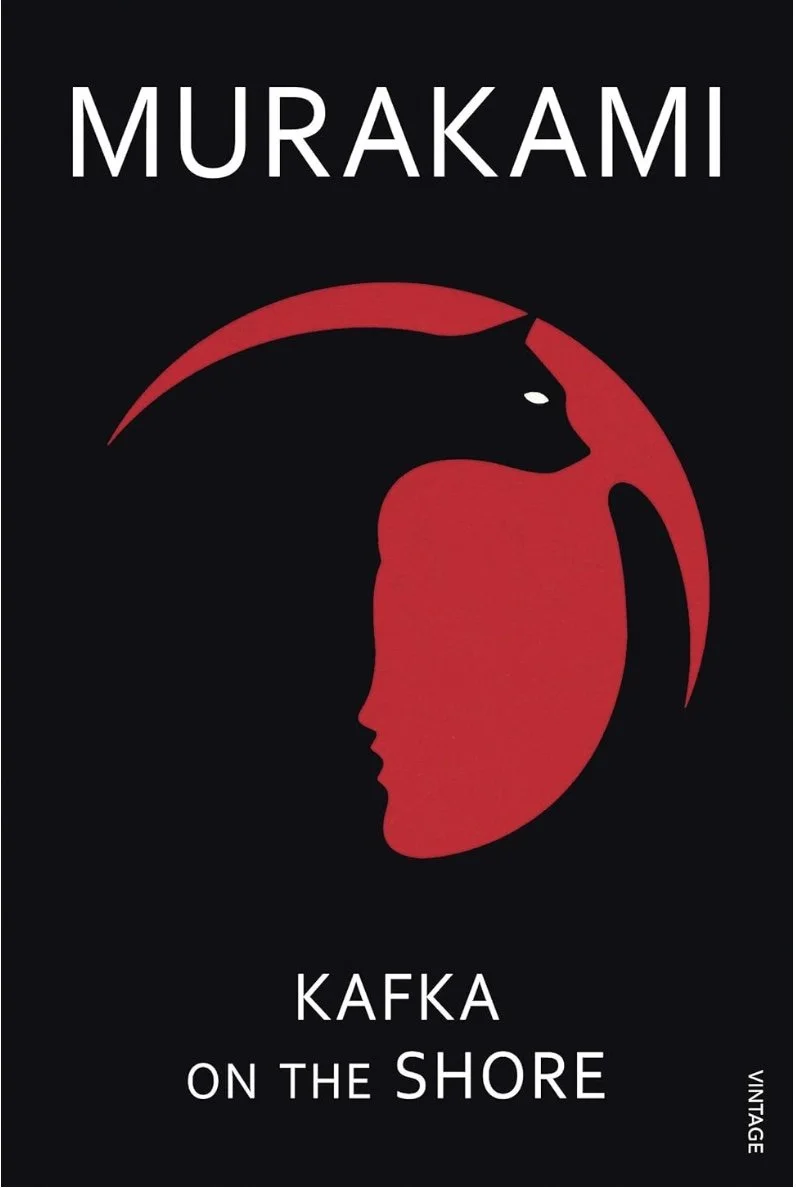Kafka on the Shore
by Haruki Murakami
A surreal, emotional, and unsettling novel about loneliness, fate, and the strange ways memory keeps us tethered to both life and loss.
What It’s About
It’s hard to explain Kafka on the Shore without flattening it. Like so many of Murakami’s stories, it lives between worlds, part dream, part memory, part something else entirely.
At the center is Kafka Tamura, a fifteen-year-old who runs away from home after hearing a strange prophecy. His journey takes him to a quiet library where he meets Miss Saeki, a woman haunted by her past, and Oshima, who might be the only person who truly sees him. Somewhere else in the same world, an old man named Nakata talks to cats, travels with a truck driver named Hoshino, and follows invisible signs that bend time and space.
Fish fall from the sky. Doors open between worlds. Memories loop and repeat. The book moves the way dreams do, gently, then suddenly, then not at all.
What Stuck With Me
When I finished it, my first thought was, there’s Murakami being Murakami. It’s wild, full of impossible moments, and yet it feels completely human.
What surprised me most wasn’t the surrealism or the violence, but how lonely this book felt. Every character, Kafka, Miss Saeki, Nakata, is stranded in their own kind of isolation. Kafka is searching for love and identity in a world that keeps turning him inward. Miss Saeki is trapped inside her own memory, unable to move past the boy she lost decades ago. Nakata is missing his past entirely, living gently in a world he only half understands.
I know the relationships in this book trouble some readers, and they troubled me too. The blurred lines between dream and taboo make the story uncomfortable, sometimes even repulsive. But that discomfort feels intentional. Murakami seems to be asking what happens when the lines between desire, guilt, and fate dissolve, and what kind of forgiveness is possible when the people involved barely understand what they’re seeking.
Would I Recommend It?
Yes, if you’re ready for something strange and patient. Kafka on the Shore isn’t a book that gives you answers. It’s one that asks you to sit in uncertainty, to trust that confusion can be a kind of understanding.
It’s a story about loneliness, about memory, and about the quiet, impossible ways people reach across time to find each other. And maybe that’s enough.
This post contains affiliate links. If you purchase through these links, I may earn a commission at no additional cost to you.
Where to Find It:
Buy on Amazon
Buy on Bookshop.org
First time on Bookshop.org? Click for discount code
Also available via WorldCat if you want to check your local library
Related Reads:
Norwegian Wood by Haruki Murakami - a quieter, more grounded look at grief and coming of age.
The Hole by Hye-Young Pyun - psychological, dark, and surreal in a very different register.
Human Acts by Han Kang - a lyrical exploration of memory and state violence.
Set the Mood
Murakami’s Coffee Companion – Hario V60 pour-over set for long, quiet mornings.
Japanese Incense Sticks – Sandalwood – for reading by scent and memory.
Minimalist Ceramic Mug – handmade texture, warm neutral tones.
Beethoven Piano Trios Recordings (Archduke Trio) – the real-life music that echoes through this novel.
Soft Leather Bookmark Set – calm colors for surreal nights of reading.

